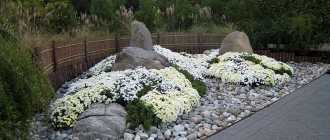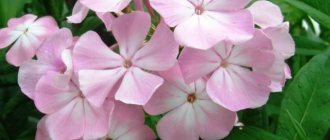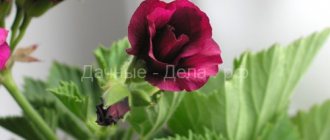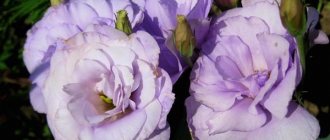Dahlias are one of the most popular garden plants. Due to the shape of the flowers, they are divided into several groups. Before planting a blooming beauty in your summer cottage, it is worth studying the characteristics and varieties of varieties in separate groups.
Beautiful flowers begin to dominate the garden from mid-summer. It is then, thanks to the hot, sunny weather, that most of the buds set and the inflorescences quickly develop. They compete for attention with annuals because most perennials are already flowering at this time. Beautiful perennial dahlias - varieties with photos and names, descriptions of popular species are presented in this article.
Gardens usually contain decorative and cactus dahlias - prized for their large, richly presented flowers. It is worth paying attention to the less popular species from the group of single varieties, pleasing with their simplicity and delicacy.
Simple
Yellow Hammer
| |
Romeo
| |
Sneezy
|
Features of care during flowering
In Russia, the flowering period of dahlias lasts on average from May to November. When the dahlia blooms, it is necessary to maintain the necessary conditions for it - at this time it has a great need for nutrition. The soil under the flower should always be slightly moist, but not damp. From a lack of water, the stems become woody, dahlias’ flowering deteriorates, and growth slows down.
In dry, hot weather, you need to increase the air humidity. This is done using sprayers with small holes. To better retain moisture in the soil and prevent crust formation, the ground under the dahlia is mulched with humus, peat or dry manure.
Pinching a plant
To stimulate the appearance of flowers, it is necessary to pick off flowers that have already faded, then new buds will form faster.
Important! If there is extensive growth of green mass (the plant is overfed), it is necessary to thin out the bush to improve ventilation and nutrition of the flowers. To do this, cut off the lower leaves to a height of 40 cm.
The procedure is also necessary to ensure that the stem does not thicken at the root collar and the tubers do not rot.
Fertilizer
During the flowering of dahlias, they must be regularly fed with organic and mineral fertilizers - once every 2 weeks. To do this, 1/4 of a bucket of manure, 15 g of potassium or 10 g of ammonium nitrate, 15–20 g of Superphosphate and 10–15 g of potassium sulfate are dissolved in 1 bucket of water. The resulting mixture can be used to feed 4–5 plants at the roots.
This fertilizer is used until mid-July. Then the composition is changed to phosphorus-potassium fertilizers, and from the second half of August - to phosphorus fertilizers. After each feeding, it is advisable to spray the bushes with water to moisten the leaves and increase humidity.
On a note! With a lack of water, potassium and phosphorus, root tubers will grow poorly. As a result, there will be no planting material for next year, or it will be of poor quality.
Anemoneaceae
Lambada
| |
Honey
| |
Phantom
|
Reproduction of dalia
The time comes when the rhizomes should be prepared for planting in the ground, while propagating the bushes. To do this, several measures should be taken.
- Roots and damaged parts that have dried out over the winter are removed from the tubers. The cut areas are lubricated with simple pharmaceutical brilliant green.
- Prepared tubers are placed in pots filled with fertile substrate or peat. In this case, 2-3 cm of the stem should be left protruding above the soil surface.
- The pots are kept for 14 days in a warm corner where the air temperature is at least 18 degrees. Buds usually appear on the tubers right there.
- Tubers with young buds are cut into pieces or divisions. Each part should have a formed bud and a root collar. Usually 5 full segments come out of 1 tuber.
- The cuttings are planted in a nutrient medium in pots or containers and allowed to sprout until it gets completely warmer outside.
- When shoots grow longer than 10 cm, they are cut off. The delenki are moved to the garden plot if frost is no longer expected.
- Cut shoots are placed in pots with a moist substrate and placed in a dark, warm place. By ensuring regular, good watering, rooted cuttings are obtained.
- The shoots that have taken root are planted in the garden, decorating the flowerbed with another beautiful plant.
Such events make it possible to dynamically propagate dahlias and improve varietal characteristics. Due to the fact that tubers, trimmings and cuttings are planted on different days, the garden plot looks blooming for a long time.
If there is no need, you don’t have to divide the tubers, just prepare them correctly, change their permanent place of residence, monitor the quality of the soil, foliage, stems, and admire the beauty of the inflorescences.
Collar
Fashion Monger
| |
Night Butterfly
| |
Alpen Mary Lloyd
|
Collar
Representatives of collar varieties are characterized by the following characteristics:
- in the middle of the basket there is a disk of tubular flowers;
- around them there is a row of collar petals;
- The last row contains large reed flowers.
Collared varieties
Fashion Morgen
A bright variety of collared varieties. Its flowers combine several shades: red-crimson edges, a white transition row and a yellow core. Fashion Morgan bushes, unlike other varieties of the variety, are low-growing dahlias. The bush rarely grows above 60 cm.
Important! Flowers after cutting can retain their decorative appearance for a long time, which is why florists often use them.
Alstergrus
Alstergruss are real mini dahlias. Their height does not exceed 40 cm, and breeders, trying to breed indoor flowers from them, constantly reduce the size of the bush. Alstergrus dahlias have amazing vibrant color. The bud perfectly combines red and yellow shades.
Nymphaeaceae family
Gerrie Hoek
| |
Bahama Red
| |
Angela
|
How to plant dahlias in spring: soil preparation
Digging the soil
The soil for planting dahlias is prepared in the fall. It is dug up to a depth of 25-30 cm and left in clods until spring.
In early spring, the site is fertilized with well-decomposed humus (2-3 buckets per 1 sq. m.) and compost (1 bucket per 1 sq. m.). Good results are obtained by adding mineral fertilizers for flowering plants to organic matter at the rate of 50-70 g per 1 square meter. m. After applying fertilizer, the area needs to be dug up again and raked.
Decorative
Vancouver
| |
Tartan (Tartan)
| |
Lady Darlene (Lady Darlene)
|
Grouping varieties by flower structure
Based on the structure of the flower, dahlia varieties are divided into the following groups:
- simple/single row;
- anemone-shaped;
- cactus;
- semi-cactus;
- spherical;
- nymphaeal;
- pompons;
- collar;
- decorative.
Single/single row dahlias
This group consists of low-growing bushes with non-double flowers, the petals of which are arranged in one row. The diameter of the blooming dalia is 10 cm.
The following varieties of simple dahlias have become widespread:
'Happy Kiss' is an achievement of Dutch breeders. Flowers of orange color with a slight shade of pink were obtained at the beginning of this century. Rounded light petals frame a dark accented center with bright splashes of golden anthers. IN THE PHOTO: Variety 'Happy Kiss'.
Variety 'Romeo' - simple, surprisingly bright scarlet flowers decorate the garden until frost. The height of the stems does not exceed 55 cm, the diameter of the flower is standard for this group - 10 cm.
IN THE PHOTO: Variety 'Romeo'.
'Jolly Guys' - the variety is represented by flowers of various bright colors, consisting of one or two rows of rounded petals with a small sharp tucked tip. A height of 30–60 cm allows you to form beautiful borders, arrays and ridges from bushes. If you choose 'Jolly Fellows' dahlias, growing them will not require any effort from you. They are popular because they are unpretentious, drought-resistant and do not require digging up the root system for winter storage. Flowering reaches its maximum in the first year, so these dahlias are grown from seeds as an annual. IN THE PHOTO: Variety 'Jolly Guys'.
Mixes of simple dahlia seeds of different colors are often available on sale, for example, 'Mignon Mischung' . This mixture is selected from varieties that do not exceed 50 cm in height and bloom with single or semi-double flowers. IN THE PHOTO: Variety 'Mignon Mischung'.
Anemone dahlias
The stems are decorated with semi-double buds with a diameter of 5 to 10 cm. The middle petals are shortened, often dissected towards the tips. The outer petals create a dramatic frame for the dense center. Most varieties of this group are low-growing - 60–70 cm.
The following varieties of dahlias with anemone-shaped flowers are popular:
'Boogie Woogie' - has an unusual color. The dense center of the flower consists of bright yellow narrow petals, strongly dissected towards the tip. The carved outer edge is deep pink. When cut, the buds remain fresh for up to seven days. 'Boogie-Woogie' blooms from mid-summer until the first days of October. The bush looks great alone and in group plantings. IN THE PHOTO: Variety 'Boogie Woogie'.
'Lambada' - large semi-double bud painted in two shades. The creamy center of thin and sharp petals is framed by light pink round ones. From July to October there are several waves of flowering, lasting 14 days. A fully blossomed bud turns into a flower up to 15 cm in diameter.
IN THE PHOTO: Variety 'Lambada'.
'El Nino' is a variety with small flower heads of a luxurious burgundy color. The size of each inflorescence does not exceed 10 cm. The height of an adult bush is from 80 cm to one meter. Blooms in July and lasts until the end of October. The stems, despite their height, are quite strong and do not require tying.
IN THE PHOTO: Variety 'El Nino'.
Cactus dahlias
Double inflorescences of this group of varieties consist of elongated pointed petals rolled into narrow tubes/needles. The structure of the flower resembles a cactus, which gives the group its name. I would like to mention a pleasant feature - during rain, the inflorescences are not weighed down by raindrops and do not droop to the ground. If the petal is strongly dissected from the tip to the center, such a plant is classified as arachnid.
Popular varieties of this group:
'Park Record' - large, up to 18 cm, inflorescences bloom on a dwarf bush not exceeding half a meter in height. The bright, rich orange color of the petals tends towards yellow towards the middle of the flower and turns red at the edges. Recommended for cutting. Cactus dahlias 'Park Record' bloom several times from mid-summer to September. The flowers last on the bush for two weeks.
IN THE PHOTO: Variety 'Park Record'.
'Playa Blanca' - low-growing, up to 50 cm, bushes. During flowering, they are showered with large, fifteen centimeters in diameter, snow-white double flowers made of needle-shaped petals. They last a long time in bouquets, can be grown as a potted plant, and look good in borders and flower beds. Cactus dahlias of the 'Playa Blanca' variety are pleasing to the eye from July to October.
IN THE PHOTO: Variety 'Playa Blanca'.
'Stars Lady' - has white and pink lush needle-shaped buds that look very delicate. The height of the stem is up to 50 cm, which in combination with inflorescences of 15 cm gives a beautiful blooming bouquet. Used for growing borders. They bloom profusely from mid-summer to mid-autumn.
IN THE PHOTO: Variety 'Stars Lady'.
Semi-cactus varieties
This group is an intermediate link between cactus and decorative dahlias. The elongated narrow petals are curled into a tube not along the entire length, but starting from the middle. Blooming double inflorescences reach 25–30 cm in diameter. The bushes are often medium and tall, from 80 cm to one and a half meters.
Prominent representatives of the group of semi-cactus varieties are:
'Aspen' - a sixty-centimeter bush is crowned with white sparkling flowers with a gracefully twisted tip. The size of the inflorescences is small - only 7–10 cm. You can cut 'Aspen' for bouquets from July to September. Flowering is wavy, 2–3 weeks. IN THE PHOTO: Variety 'Aspen'.
'Mick's Peppermint' is a medium-growing variety, up to 130 cm high. Twenty-centimeter buds of a delicate pink color are dotted with bright pink and purple splashes. Flowering lasts 2–3 weeks and repeats several times per season.
IN THE PHOTO: Variety 'Mick's Peppermint'.
Collared dahlias
This group is distinguished by a special flower structure: the outer row of large petals is covered on top with smaller, thinner and contrasting-colored petals. It is the second row that evokes associations with an openwork collar. Most varieties do not exceed 120 cm in stem height and 10 cm in inflorescence diameter.
'Impression Fabula' is one of the most beautiful varieties of collared dalia. The outer row consists of large petals of a rich lilac color with milky white tips. The inner white row borders the bright yellow center of the flower. A dwarf forty-centimeter bush blooms in early June. The variety 'Impression Fabula' is grown in pots and on lawns, and also cut into bouquets that last a surprisingly long time - more than a week.
IN THE PHOTO: Variety 'Impression Fabula'.
'Collerette Dandy' - is a multi-colored mix of collared dahlias with a bush height of 60 cm and an inflorescence size of up to 9 cm. It blooms in July–October. Those who bought dahlia seeds 'Colaretta Dandy' are grown using seedlings and non-seedlings. IN THE PHOTO: Variety 'Collerette Dandy'.
Decorative dahlias
The flowers of decorative varieties of dalia are double, consisting of well-developed straight petals, slightly curving towards the edge of the inflorescence. The size of the flower head under favorable conditions reaches 25–35 cm. The colors are very diverse.
The best varieties of decorative dahlias:
'Gallery La Tour' is a low-growing bush with long flowering, bred by breeders in 2007. Flowers ranging in size from 15 to 20 cm bloom from the beginning of summer until frost. Both tubular and reed petals are painted in delicate pink with a lilac tint. The variety is suitable for cutting, growing in pots, decorating flower beds and borders.
IN THE PHOTO: Variety 'Gallery La Tour'.
'Melody Dixie' - 1999 variety. The compact bush does not exceed 60 cm. Petals with a beige center closer to the edge acquire a rich pink tone. The inflorescences are dense, double, reaching 15 cm in diameter. In illuminated areas with light and fertile soils, it blooms profusely from the beginning of summer until the onset of frost.
IN THE PHOTO: Variety 'Melody Dixie'.
Nymphaeum dahlias
Sometimes nymphal varieties are called lotus varieties. They bloom with large flowers, up to 20 cm. The height of the bush reaches 120 cm.
'Fleurel' - due to the length of the shoots and the large weight of the flower heads, it is recommended to plant it in places protected from strong winds and tie it up. The flowers are large, dazzling white, and decorate the landscape until late autumn. It is recommended to plant in a group in a sunny or partial shade location. The variety does not require special care, but requires regular watering and spraying in dry weather conditions. Rarely damaged by pests.
IN THE PHOTO: Variety 'Fleurel'.
Globular dahlias
A group of annual, medium-sized varieties with abundant flowering from summer to cold weather. The inflorescences are dense and spherical, reaching a size of 15 cm.
The best varieties of spherical dahlias:
'Funny Face' - bright yellow flowers with red strokes and splashes bloom on a meter-tall bush. The size of the inflorescences is small - from 8 to 10 cm, but their appearance is very neat and elegant. The petal at the base is rolled up to the middle into a tight tube, opening towards the edge. Blooming in waves lasting two to three weeks ends in September. A bouquet of Funny Face flowers will last at least a week.
IN THE PHOTO: Variety 'Funny Face'.
'Boom Boom Purple' - flower heads 7–10 cm in diameter look very neat. The color is purple, rich and bright. It blooms for 2 weeks with short breaks. The first buds bloom in July, the last ones fade in September. An excellent plant for borders. It is also used in single plantings.
IN THE PHOTO: Variety 'Boom Boom Purple'.
'Marble Ball' - fifteen-centimeter milky-white flowers abundantly dotted with dark purple splashes and streaks. The length of the stems ranges from 80 cm to one meter. The variety is beautiful in single plantings and holds up well when cut. IN THE PHOTO: Variety 'Marble Ball'.
Pompon dahlias
The petals of double inflorescences are neat, slightly bent inward and arranged relative to each other like tiles. The color range of this group is very diverse. The color is heterogeneous, thickens towards the edges or center, giving the flower additional texture.
A striking example of a pompom dahlia variety:
'Sunny Boy' - with a bush height of one meter, the size of the inflorescence reaches 12 cm. The petals are colored rich yellow, scorched with bright orange at the tips and in the center of the bud. Contrastes well with white and red dahlias in complex plantings. The duration of flowering can be increased by organizing good watering and cutting off spent flowers. The variety is disease resistant, unpretentious, and can grow in partial shade. For landing, it is advisable to select windless places.
IN THE PHOTO: Variety 'Sunny Boy'.
Globular
Dark Spirit
| |
Wizard of Oz (Wizard Of Oz)
|
A little history
There are many descriptions of dahlia varieties, but they all belong to one genus - Long-flowering. The plant’s homeland is Mexico; the flower was brought to Europe only at the end of the 18th century. When dahlias first began to be cultivated, their shoots were quite long, slender, with wide spaces between the branches. By breeding new varieties, gardeners were able to maintain the symmetrical shape of inflorescences and bushes.
Flowers, depending on the variety, may differ in the shape of the petals. Flowering is always long. The dahlia begins to delight gardeners with the brightness of the proposed palette from mid-summer and continues to retain its decorative appearance until the autumn frosts. It is this advantage that is valued in the plant more than others. So far, only 13 species of this garden flower are recognized, but there are about 15 thousand varieties. All of them are described in detail in encyclopedias.
These Mexican flowering bushes are classified according to the size of the inflorescences and bushes, and there is a division according to the color scheme. There are countless hybrids in each class, which helps group them into an organized system. Experienced plant breeders are engaged in breeding special varieties, competing with each other. As a result, even more plants with amazing flower shapes are appearing on the market. Newly introduced types of dahlias amaze the mind and imagination of gardeners.
Most varieties have medium to large bushes. All dahlias grow from tubers. The plant loves sun, well-drained soil, and plenty of water.
All presented varieties of this flower can be divided into classes according to the shape of the flower. The way the flower looks and, occasionally, the nature of its petals is taken into account. Another method of separating dahlia hybrids is to measure the size of the inflorescence. This method is a quick and fairly simple way to find out what species a plant is.
Ornamental types may exhibit thick petals that are usually flat, sometimes slightly curled. Round spherical flowers with double flat, spirally arranged petals are a different type of plant. Cactus dahlias can easily be called one of the most spectacular, they have curled, almost straight petals. There are solitary, semi-paired and anemone flowers. They display star-shaped flowers with flat petals.
Pompons
Little Robert
| |
Deepest Yellow
|
Place of permanent residence
For the king of flowers, gardeners carefully choose a suitable location. The dalia bush will look luxurious in a sufficiently lit place, where there is a lot of fresh air, but there are no cold drafts.
Suitable soil is drained, freely permeable to moisture, and rich in useful elements.
Neutral soil is better than slightly acidic soil. If the soil has an acidity of almost 4-5 pH, it is necessary to add a little slaked lime to the area. When the soil is alkaline: above 8.5 pH, you need to add peat.
When digging up a selected area in the fall, it is useful to feed the soil with humus (4 kg per 1 m2). On the first warm days, the flowerbed is covered with a thin layer of ash, covered with a pitchfork.
The good owners of the dalia in the garden annually transplant it to another place. Then the flowers do not get sick and do not lose their characteristics. The earth must rest for at least 3 years.
It is prohibited to plant these cheerful guys in a flowerbed where asters or plants infected with fungus were previously grown.
Cactaceae
Fringed Star
| |
Friguolet
|
Seeds
These flowers can be planted not only with seedlings, but also with seeds. It is best to plant dahlias in open ground in May, when the weather improves and no cold weather is expected.
Seeds should be planted in loose soil, a few at a time, but not very densely. After the shoots appear, you need to get rid of excess plants. They will bloom closer to September.
In order for dahlias to bloom earlier, it is better to plant them as seedlings. To do this, the seeds are planted in a separate box or container as early as April. Covering the box with glass or film, it is placed in a warm and bright place. The soil should be loose, and the seeds should be sprinkled with peat or sand.
In just a couple of weeks, the seedlings will sprout and will need to be planted in separate containers, for example plastic cups.
Before planting dahlias on the site, they need to be hardened off for 1-2 weeks. During this time, they will get stronger and get used to outdoor conditions. To do this, seedlings need to be exposed to fresh air, constantly increasing the time they spend outside.
In order to get a lush bush, the main shoots need to be pinched. This is done so that stepsons appear in the axils of the leaves. For high varieties, the procedure is reversed - the stepsons must be removed.
Semi-cactus
Ice Princess
| |
Adlerstein
|
What to do to make flowers bloom faster
You can speed up the moment of blooming of the first buds by forcing. 1 month before the intended planting in open ground, you should remove the tubers from cool storage. Work should begin in April. Root crops are sprinkled with coconut substrate or sawdust mixed with peat and sand. Water a little. Can be placed on a windowsill or in a greenhouse.
With the appearance of sprouts, the tubers are planted in individual pots. Before planting in open ground, they are watered from time to time, keeping the substrate slightly moist. The maximum forcing period is 4 weeks, after which the plants will begin to stretch. If the variety is prone to tillering, there is no goal of getting a tall cut, then pinch out the stems above the 4-5th leaf.
It is impossible to resist admiration when dahlias begin to bloom together. Their lush beauty is a riot of colors. Which variety to choose for the next season is the question flower growers ask themselves as they enthusiastically look at nursery catalogs.
Transitional
Akita
| |
Pink giraffe
|
FAQ
When do dahlias bloom? This is a late flowering plant; flowers usually appear in August-September and continue to bloom until frost.
Can dahlias cross-pollinate? When grown with tubers - no. If grown by seeds, cross-pollination of dahlias is possible.
Can dahlias change color? If different varieties are stored together, then they are able to cross even in winter, changing their color, structure, and shape.
If you are truly passionate about growing dahlias, then even a beginner can easily become a master. Studying the variety of dalia varieties can be a lifetime endeavor.
short
Gallery
| |
Berliner Kleene
|
In the video, the florist shows popular varieties of dahlias and talks in detail about the parameters and outstanding characteristics of each flower.
Peculiarities
Let's take a closer look at the description of this amazing flower. It is generally accepted that the name “dahlia” is masculine. This flower is a herbaceous Compositae plant belonging to the Asteraceae family. The leaves of the flower are simple, arranged in pairs on the stem, most often have a pinnate shape, and are 10-40 cm in length; color – green or dark burgundy. The stems are hollow inside and dense outside; depending on the variety, dahlias in the wild can grow up to 2.5 m in height.
There are perennial and annual varieties of dahlias. Moreover, the latter are highly recommended for beginning gardeners because of their beauty and unpretentiousness.
Diseases and pests
| Leaf spot Symptoms:
Treatment:
| |
| Gray rot Symptoms:
Treatment:
| |
| Aphids or Aphididae Symptoms:
Treatment:
|
Reviews from flower growers
VEP
Akita is red with a yellow base. And Rebecca World cannot be identified with one photograph - all the flowers on the bush are different
Source: www.forumhouse.ru
Topolek
I planted Art Deco from dahlias Gelleri in the ground - I really liked it, it bloomed all season from June to November as a large beautiful bush, about 50 cm.
Source: flower.wcb.ru
Landing
Plants are planted after all frosts, because dahlias are heat-loving and cannot withstand significant drops in temperature. Flowers should be planted in the ground in May-early summer.
Plants are demanding on soil and can only grow in nutritious, loose and fertile soil. It can be loam, black soil or sandy soil with peat. The reaction must be neutral or slightly acidic. Organic fertilizers are used to increase fertility.
The choice of location is important. In direct sunlight, the flowers get burned and the leaves dry out. The best option is a well-lit but shaded area. The area should be protected from drafts and strong winds: although the stems are dense, they are fragile and easily break.
The tubers are placed in prepared recesses that are appropriate in size. Before planting, it is advisable to add a layer of organic matter, such as manure or compost, to the bottom. Do not deepen the dahlias too much: the root collar should rise 1.5-2 centimeters above the soil surface.











